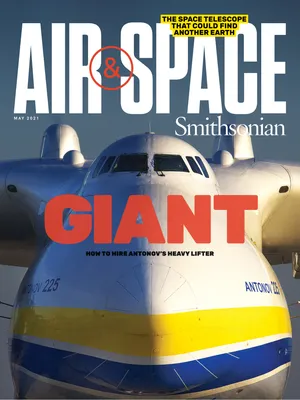On Earth Day, We’re All One World
From the Director of the Smithsonian’s National Air and Space Museum
:focal(1192x412:1193x413)/https://tf-cmsv2-smithsonianmag-media.s3.amazonaws.com/filer/19/76/1976fb7a-3839-4aed-80a8-0ce8287824bc/25a_am2021_oneworldconnected_live.jpg)
Venturing into space truly altered our understanding of our home. When humans moved out of low Earth orbit for the first time in 1968, we saw our home planet suspended and alone in space—with no national borders visible to the wider universe. That sight, shared with the world in a photograph, helped spark the modern environmental movement. One astronaut commented that we’d gone forth to explore outer space but ended up discovering the Earth.
The first Earth Day was celebrated less than two years later. And in the decades since, as we began to explore the solar system, Earth remained the ultimate focus of all space exploration. The planetary probes that study alien environments give us valuable data about how our own planet developed and works. Our constellations of Earth-orbiting satellites support the global communications and positioning grids that have changed our lives. And of course, Earth observation has revolutionized our understanding of the greatest threat to life on Earth today—anthropogenic climate change.
We don’t need satellites to see the most extreme effects of climate change—severe weather, droughts, wildfires. These effects impact—and in some cases disrupt or destroy—the lives and livelihoods of everyone on Earth. But satellite data are critical to the work of mitigating the damage. Information from space can help farmers make decisions about what to plant, how much to water—how to do the work of feeding the world. It helps us predict the sea level rise that threatens our cities and lets us track extreme weather systems that continue to worsen.
The effects of space exploration on our daily lives and all life on Earth is at the center of a new gallery opening next year at the National Air and Space Museum: One World Connected. The exhibit illustrates the changing views of our globalized world, with artifacts related to rising environmental awareness as well as the tools scientists, engineers, and astronauts use to observe and understand Earth from space.
As we rethink our Museum for the century ahead, we want to challenge our millions of visitors to understand the impact of human activity on Earth, and pose questions about how our increasing understanding of an interconnected planet can shape their lives and inform a brighter future. In the end, that is the purpose of every advance in aviation and spaceflight—a better life here on the ground.
